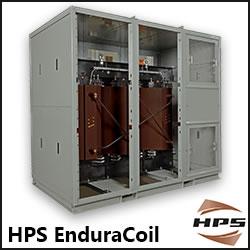Battery Energy Storage: The Backbone of a Reliable Renewable Grid
Battery Energy Storage Systems (BESS) are transforming the clean energy landscape by stabilizing grids, reducing fossil fuel dependence, enabling renewable integration, and improving energy access. As costs fall and technology advances, BESS is becoming essential for a resilient, carbon-free future.
The clean energy transition is one of the defining priorities of this century, as nations move away from fossil fuels and expand wind, solar, and hydro power. But renewable energy brings a familiar challenge: its variability. The sun doesn’t always shine, and the wind doesn’t always blow—creating gaps that traditional grids were never designed to manage.
Battery Energy Storage Systems (BESS) are emerging as the key technology solving this issue. These large-scale systems store electricity when renewable generation is high and deliver it back to the grid during peak demand or low-production periods. In doing so, they are reshaping how modern power grids operate, enhancing reliability, resilience, and access to clean energy.
Why Storage Matters in a Renewable-Driven Grid
Conventional grids depended on fossil-fueled power plants that could adjust output quickly. Renewable energy behaves differently, generating power based on environmental conditions. BESS helps balance these fluctuations by capturing surplus electricity and releasing it when needed—keeping supply and demand in sync.
Reducing Reliance on Fossil Fuel Peaker Plants
When demand spikes, utilities have historically turned to natural gas or oil-based peaker plants. These facilities are expensive, inefficient, and carbon-intensive. BESS offers a cleaner replacement, responding instantly to grid stress while reducing emissions and operational costs.
Beyond environmental benefits, storage improves grid efficiency and minimizes the need for costly infrastructure upgrades. It also supports new economic opportunities—from manufacturing to installation and long-term maintenance—building momentum for a clean energy workforce.
Real-World Deployments Proving the Value of BESS
- Hornsdale Power Reserve, Australia
Often called the “Tesla Big Battery,” this installation provides frequency regulation, improves renewable integration, and has delivered millions in grid cost savings. It remains a global benchmark for utility-scale storage. - California’s Battery Storage Expansion
With ambitious renewable energy mandates, California has invested heavily in BESS to mitigate solar intermittency, meet peak demand, and strengthen grid reliability. - Rural Electrification Across Africa
In remote regions, BESS-powered microgrids are delivering affordable, dependable electricity—supporting economic growth, education, and healthcare access.
Key Challenges That Must Be Addressed
High Initial Investment:
Although costs are dropping quickly, large-scale storage projects still require substantial upfront capital.
Regulatory and Market Barriers:
Supportive policies and market structures are essential to encourage storage deployment and allow BESS to compete on equal footing with traditional assets.
Technology Evolution:
Lithium-ion batteries dominate today, but technologies such as flow batteries, solid-state systems, and thermal storage need more development to address concerns around longevity, safety, and supply chain sustainability.
End-of-Life Management:
Recycling pathways and responsible disposal are crucial for creating a circular, environmentally responsible storage ecosystem.
A Foundation for a Renewable Future
Battery Energy Storage Systems are no longer optional,they are foundational to the clean energy transition. By stabilizing grids, enabling more renewable penetration, and reducing reliance on fossil fuels, BESS is creating a more resilient and sustainable energy landscape. As technology evolves and policy frameworks mature, the role of BESS will continue to expand, accelerating progress toward a carbon-neutral future.
Featured Product

